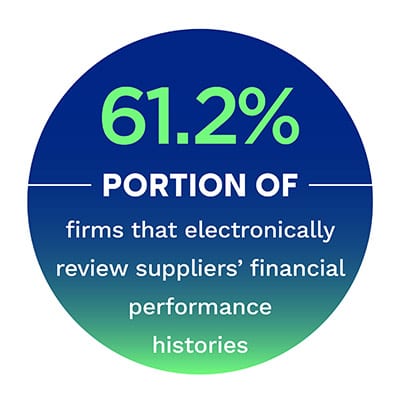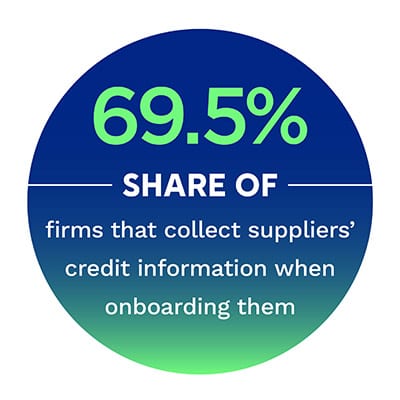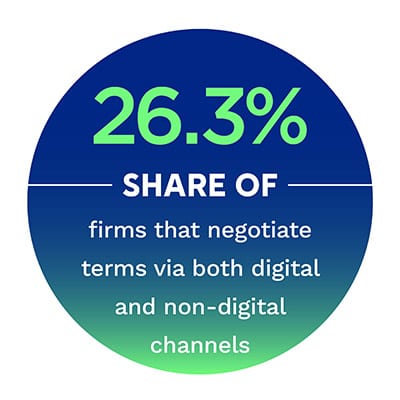Most firms cover the basics, by collecting suppliers’ names and addresses (72.5 percent do this) and credit information (65.9 percent). Still, others use onboarding to verify much more specific information, like new business partners’ ownership structures (30.7 percent do this) and whether a new supplier is restricted by international sanctions (26.7 percent).
 For all the various ways businesses onboard new suppliers, the accounts payable (AP) professionals running the show seem to agree that performing them digitally makes it easier to receive, approve and pay supplier invoices. They are more likely to rate their invoice receipt and approval processes as efficient if they verified delivery time frames and offered terms, for instance.
For all the various ways businesses onboard new suppliers, the accounts payable (AP) professionals running the show seem to agree that performing them digitally makes it easier to receive, approve and pay supplier invoices. They are more likely to rate their invoice receipt and approval processes as efficient if they verified delivery time frames and offered terms, for instance.
Despite this apparent consensus, there are still certain onboarding operations that firms tend to carry out manually. This begs the question: Why have American businesses been quick to digitize certain onboarding processes, but not others? More importantly, how can they work to adopt more digital onboarding solutions going forward?
In the Payables Friction Playbook: Old-School Manual Versus Digital Onboarding Edition, PYMNTS delves into the details of how businesses are leveraging digital innovation to streamline their onboarding processes and optimize their invoice processing operations.
details of how businesses are leveraging digital innovation to streamline their onboarding processes and optimize their invoice processing operations.
Our latest research demonstrates that there is no black and white when it comes to supplier onboarding. Rather than relying purely on either digital techniques or manual efforts, most businesses onboard suppliers using a mix of both digital and manual techniques.
Advertisement: Scroll to Continue
Among AP professionals who say their onboarding process includes a review of suppliers’ credit information, 20.5 percent of surveyed AP professionals said their firms do so using both digital technology and manual techniques, for example. Meanwhile, 26.3 percent of firms that negotiate with individual suppliers when onboarding them say their firms do  so using both digital and traditional channels of communication, including emails, supplier portals and phone calls.
so using both digital and traditional channels of communication, including emails, supplier portals and phone calls.
It may seem intuitive that negotiations are done using digital and traditional communication channels, but the reason for relying on both manual and digital methods for collecting credit information is less immediately apparent — particularly when relying on digital solutions leads to greater efficiency later on.
The latest edition of the Payables Friction Playbook gets to the bottom of firms’ enduring reliance on manual onboarding techniques for operations like these, despite the availability of digital alternatives.
To learn more about how businesses are leveraging digital innovation to optimize their onboarding processes, download the report.
